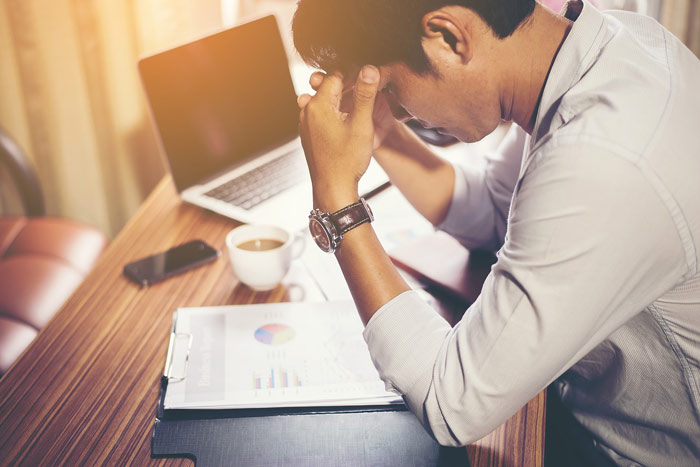Have you noticed that those involved in sports are more often full of energy and more cheerful than those who prefer lazy evenings on the couch? In theory, everything should be the other way round: training takes a lot of effort, and blissful idleness restores energy. But it’s not so simple. What happens to the brain, when we exercise? What should we do, if sports brings no fun?

It is commonly known that a person feels a surge of vigor and strength after fitness. Usually this is described by a lengthy phrase: “Physical activity stimulates the synthesis of happiness hormones, endorphins.” What is really going on?
David J. Linden, Professor of neurology at Johns Hopkins University in Baltimore, writes in his book “The Compass of Pleasure: How Our Brains Make Fatty Foods, Orgasm, Exercise, Marijuana, Generosity, Vodka, Learning, and Gambling Feel So Good” that modern science cannot answer the question, which biochemical changes in the brain are generated by physical loads. However, some experiments have shown that exercising is accompanied by an increased release of brain opioids. These substances play an important role in the formation of emotions, attachment, motivation, and reaction to stress and pain.

Reaction to stress
In addition, physical activity also gives quick short-term effects that last 1-2 hours: increasing the pain threshold, reducing anxiety, and the so-called “runner euphoria”. In addition, when you begin to exercise, the body reacts to this stress: blood pressure rises, and breathing becomes more frequent. You seem to be fighting an enemy or trying to escape from him – that’s how the brain perceives it.
As a result, the body begins to produce a special protein called BDNF (neurotropic factor of the brain). It participates in the formation of new neural connections, due to which we feel the clarity of thoughts and happiness.
 Physical activity boosts muscles and improves the state of the cardiovascular system.
Physical activity boosts muscles and improves the state of the cardiovascular system.
Honored professor of the University of California Loretta Graziano Breuning explains in the book “Meet Your Happy Chemicals: Dopamine, Endorphin, Oxytocin, Serotonin” that the synthesis of endorphin in the body is unstable. Its rise can actually be caused by physical exercises. Still, practising sports till exhaustion is harmful: it is better to alternate different loads and try new types of physical activity. Thus, you will train different muscle groups, and you will not get tired of sports.

For example, endorphin is actively produced when you do stretching exercises. The latter can be done not only in the gym but also at home: watching a favorite TV series or talking on the phone.
Moreover, the physical load heals the body globally, positively affects the musculoskeletal system, and improves the quality of muscles and the state of the cardiovascular system. Metabolism is accelerated, and the immune system is strengthened. When all the systems “work fine”, you feel better, that is happier.
You don’t like exercising?
 Fitness gives joy. But there are exceptions. Unpleasant sensations are usually associated with either poor recovery or with the state of “overtraining.” If you come to fitness tired, review the schedule of the day. Perhaps you do not sleep well: you suffer from insomnia, your sleep is intermittent, and you do not feel cheerful on awakening.
Fitness gives joy. But there are exceptions. Unpleasant sensations are usually associated with either poor recovery or with the state of “overtraining.” If you come to fitness tired, review the schedule of the day. Perhaps you do not sleep well: you suffer from insomnia, your sleep is intermittent, and you do not feel cheerful on awakening.
Poor recovery may be caused by a mismatch between the nutrition levels and physical activity, diet imbalance, or the deficiency of vitamins and trace elements. Besides, the body does not rest because of a high level of stress. As a result, the level of cortisol increases, which, in turn, does not facilitate qualitative recovery. The state of overtraining also appears due to the incorrect workload: either the power component is exceeded and the nervous and musculoskeletal systems are overloaded, or the cardiovascular component is exceeded and the cardiovascular system suffers”.
Well-balanced physical load increases life expectancy. Incorrect load can do much harm.
If you have the above-mentioned symptoms, it is important to establish the cause and solve the problem. The load must be manageable. We must not forget about food. If you train actively, the body needs more energy.
A competent and regular physical load affects the body at the DNA level, increasing life expectancy. Therefore it is important to train constantly, without long breaks. One or two workouts every week is better than 10 workouts every day and a two-month pause afterwards.
Can exercises help fight depression?
 Depressive states are a serious medical diagnosis. The reason lies in the violated production of special substances called neurotransmitters. It is highly unlikely that you can solve the problem through physical activity alone. As a rule, depressed people are given certain pharmacological therapy. By the way, the inability to get out of bed, not to mention exercising, is already one of depression signs.
Depressive states are a serious medical diagnosis. The reason lies in the violated production of special substances called neurotransmitters. It is highly unlikely that you can solve the problem through physical activity alone. As a rule, depressed people are given certain pharmacological therapy. By the way, the inability to get out of bed, not to mention exercising, is already one of depression signs.
During treatment, heavy or intensive exercising is not recommended: it can aggravate the situation. Physical activity is selected in a balanced and light format.
Still, workouts will definitely help avoid the usual seasonal melancholy. The impact of endorphins, which are produced by the body in response to physical exertion, will certainly be enough!











